Transform your next adventure into a force for good by choosing locally-owned accommodations, eating at family-run restaurants, and engaging with community-led tours when exploring Ontario’s provincial parks and beyond. Pack reusable water bottles, containers, and shopping bags to eliminate single-use plastics during your journey. Select off-peak travel seasons and lesser-known destinations to reduce overcrowding while discovering hidden gems that truly capture a region’s authentic character. Support Indigenous-led tourism initiatives, stay on marked trails, and practice “leave no trace” principles to protect the natural and cultural heritage of every destination you visit.
Travel sustainably without sacrificing excitement or comfort – it’s about making thoughtful choices that create positive ripples throughout local communities while preserving spectacular landscapes for future generations. Whether camping under the stars or exploring vibrant urban centers, small decisions like choosing eco-certified tour operators and offsetting your carbon footprint can transform an ordinary vacation into an extraordinary opportunity for environmental stewardship and cultural appreciation.
Smart Planning for Minimal Impact
Choose Your Season Wisely
Timing is everything when it comes to sustainable travel in Ontario! By choosing to visit popular destinations during shoulder or off-peak seasons, you’ll not only enjoy a more peaceful experience but also help reduce the environmental impact of tourism.
Consider exploring the Thousand Islands region in early fall when the summer crowds have thinned but the weather is still perfect for kayaking. Or discover the magic of Algonquin Park during mid-week in May, when the black flies haven’t yet arrived and the trilliums are in full bloom.
Winter visits to wine country can be especially rewarding – imagine having a cozy tasting room all to yourself while reducing the strain on local resources during peak season. Many wineries offer special winter experiences that showcase the region’s beauty in a whole new light.
By traveling during quieter periods, you’ll also support local businesses during their slower months and often find better deals on accommodations. Plus, you’ll get more authentic interactions with locals who have more time to share their stories and recommendations. It’s a win-win for both visitors and the environment!
Pack Light, Pack Right
Ever noticed how we tend to overpack for every trip? I’ve learned that traveling light isn’t just easier on your back – it’s better for the planet too! Start with a lightweight, durable backpack made from recycled materials, and pack versatile clothing pieces that work for multiple occasions. Think quick-dry fabrics and neutral colors that you can mix and match.
Essential sustainable gear for your Ontario adventures should include a reusable water bottle, cloth shopping bags, and a set of bamboo utensils. These simple swaps eliminate the need for single-use plastics. I always pack a microfiber towel – they’re super compact and dry quickly, perfect for beach days at Wasaga or hiking in Algonquin Park.
For toiletries, opt for solid shampoo bars, reef-safe sunscreen, and biodegradable soap. These take up less space and create zero plastic waste. Don’t forget your reusable coffee cup – Ontario’s coffee shops often offer discounts when you bring your own!
Remember, the lighter you pack, the smaller your carbon footprint. Plus, you’ll have more room for local, sustainable souvenirs on your way home!
Green Transportation in Ontario
Public Transit Adventures
Ontario’s extensive public transit network offers an eco-friendly way to explore the province’s top attractions. Take the UP Express from Pearson Airport to downtown Toronto in just 25 minutes, avoiding traffic while reducing your carbon footprint. For nature lovers, seasonal shuttle services connect major cities to popular parks and hiking trails – the Parkbus is a fantastic option that’ll drop you right at the trailhead.
In urban areas, combine subway rides with streetcar adventures to discover hidden gems. Toronto’s TTC day pass lets you hop on and off unlimited times, perfect for visiting multiple attractions. In Ottawa, the O-Train provides quick access to must-see spots like Parliament Hill and the ByWard Market.
Pro tip: Download transit apps like Triplinx or Transit for real-time schedules and route planning. Many regional transit systems offer group passes and weekend family rates, making sustainable travel both affordable and convenient. Plus, you’ll get to experience the destination like a local, meeting fellow travelers and residents along the way.
Remember to pack light – a backpack and comfortable walking shoes are your best friends when using public transit!
Bike-Friendly Routes
Ontario’s extensive network of best cycling trails in Ontario makes it easy to explore attractions while minimizing your carbon footprint. The Waterfront Trail connects vibrant communities along Lake Ontario’s shore, letting you pedal between beaches, historic sites, and charming cafes. For nature lovers, the Georgian Trail offers 34km of scenic cycling between Collingwood and Meaford, with plenty of stops for local produce and artisanal treats.
Many cities have embraced bike-sharing programs, with Toronto Bike Share and Hamilton’s SoBi making it convenient to hop on two wheels. Pro tip: download cycling apps like Strava or Komoot to discover local routes connecting major attractions. Many trails connect to public transit hubs, allowing you to combine cycling with train or bus travel for longer distances.
Look for bike-friendly accommodations that offer secure storage and repair stations. Several tour operators now specialize in self-guided cycling adventures, complete with luggage transfer services and curated routes linking wineries, museums, and natural landmarks. Remember to pack reusable water bottles and support bike-friendly businesses along your route!

Leave No Trace in Ontario’s Wilderness
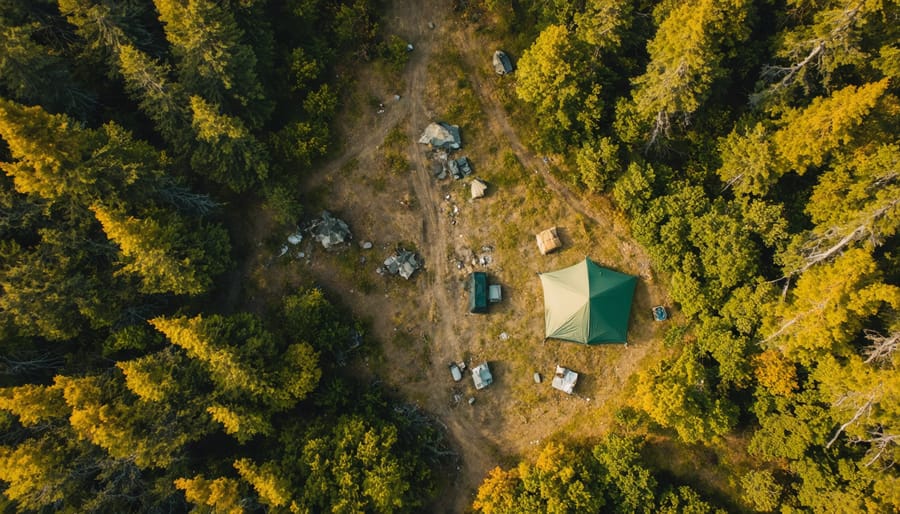
Campsite Care
When you’re camping in Algonquin Park or any of Ontario’s beautiful wilderness areas, remember that you’re a guest in nature’s home. The golden rule? Leave your campsite better than you found it! Start by choosing established campsites rather than creating new ones, which helps prevent damage to sensitive vegetation.
Pack everything in reusable containers and bring eco-friendly camping gear. I always keep a dedicated “clean-up bag” for collecting trash – both mine and any I find along the way. It’s amazing how this simple habit can make such a difference! Remember to separate your recyclables and pack them out with you.
Keep your campfire small and contained within designated fire pits. Only use local firewood to prevent the spread of invasive species – trust me, those cheap bundles from outside the park aren’t worth the risk to our forests. Before leaving, ensure your fire is completely extinguished – cold to the touch.
Store your food properly in bear-proof containers or park-provided lockers. This protects both wildlife and your supplies. When nature calls, use designated facilities or follow proper backcountry bathroom etiquette by digging cat holes at least 70 meters from water sources.
Finally, respect quiet hours and keep your campsite contained. Your fellow campers and the local wildlife will thank you for maintaining the peaceful atmosphere we all seek in nature.
Trail Ethics
When hitting the trails in Ontario’s beautiful wilderness, remember that we’re guests in nature’s home. Stay on marked paths to protect delicate vegetation and prevent soil erosion – those shortcuts might be tempting, but they can cause lasting damage to the ecosystem.
Keep your distance from wildlife – that perfect photo isn’t worth disturbing an animal’s natural behavior. A good rule of thumb is to maintain enough distance that if you extend your arm and close one eye, your thumb should completely cover the animal you’re observing.
Pack it in, pack it out! Carry a small bag for your trash and pick up any litter you spot along the way. Even biodegradable items like apple cores and banana peels can take months to decompose and attract wildlife to trail areas.
When nature calls, make sure you’re at least 70 meters from any water source, trail, or campsite. Dig a small hole about 15-20 centimeters deep for human waste, and pack out your toilet paper in a sealed bag.
Travel in small groups when possible – this minimizes trail impact and increases your chances of spotting wildlife. Early morning or late afternoon hikes tend to be best for wildlife viewing while avoiding peak crowds.
If you’re bringing snacks, store them in reusable containers rather than disposable packaging. And remember, feeding wildlife can harm their natural foraging habits and make them dependent on human food.
Support Local Communities
Indigenous Tourism
Experiencing and learning about Indigenous cultures offers a meaningful way to deepen your understanding of Ontario’s rich heritage while supporting local communities. When planning Indigenous tourism experiences, it’s essential to choose operators and programs that are Indigenous-owned and led, ensuring authentic representation and direct community benefits.
Many Indigenous communities across Ontario welcome visitors to participate in traditional activities, from guided medicine walks and craft workshops to storytelling sessions and ceremonial experiences. Before visiting, take time to research the specific nation’s protocols and customs. Show respect by asking permission before taking photos and listening more than speaking.
Consider staying at Indigenous-owned accommodations or booking tours with certified Indigenous guides who can share their deep connection to the land. The Great Spirit Circle Trail on Manitoulin Island and the Wendake Traditional Site near Quebec City offer immersive experiences that combine cultural learning with responsible tourism practices.
Support Indigenous artisans by purchasing authentic crafts directly from community markets and cultural centers. Look for Indigenous certification labels to ensure your purchase benefits the artists and their communities. Remember that each nation has its own distinct traditions, languages, and customs – there’s no single “Indigenous experience.”
By choosing Indigenous-led tourism activities, you’re not just creating memorable travel experiences; you’re contributing to cultural preservation and economic development in Indigenous communities.
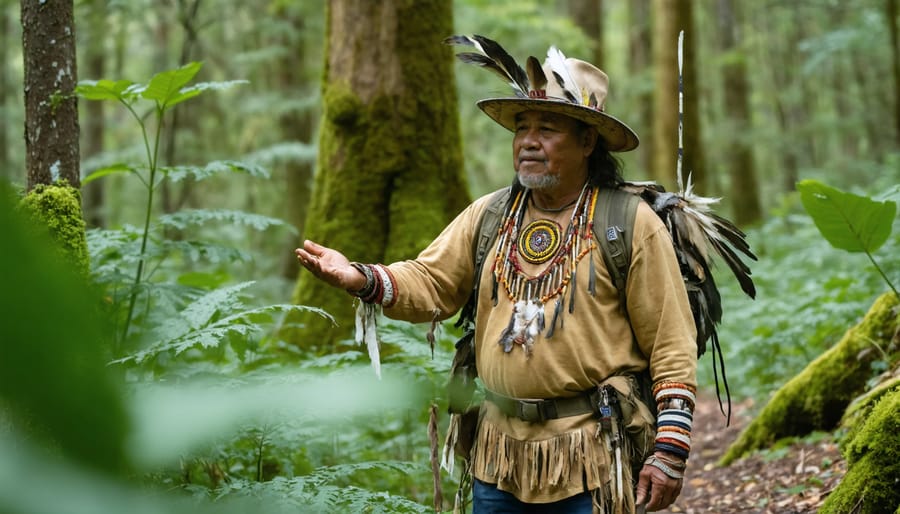
Local Eco-Businesses
One of the best ways to make your Ontario travels more sustainable is by supporting local eco-conscious businesses. These hidden gems not only offer unique experiences but also help preserve our natural environment and strengthen local communities.
Keep an eye out for businesses displaying eco-certification badges or those that openly share their sustainability practices. Many Ontario bed & breakfasts now use solar power, serve locally-sourced organic breakfasts, and implement water conservation measures. I recently stayed at a charming eco-lodge near Algonquin Park that composts all food waste and uses only biodegradable cleaning products.
For memorable dining experiences, seek out farm-to-table restaurants that partner with local organic farmers. These establishments often change their menus seasonally to showcase the freshest ingredients while reducing food miles. Some even offer kitchen garden tours or cooking classes using foraged ingredients!
Don’t forget about eco-friendly tour operators who prioritize small group sizes and minimal environmental impact. From wildlife photography workshops to Indigenous-led nature walks, these experiences provide deeper connections to Ontario’s landscapes while supporting responsible tourism practices.
Local artisan markets are treasure troves of sustainable souvenirs. Look for handcrafted items made from recycled materials or sustainably harvested resources. Many Ontario craftspeople create beautiful pieces using fallen wood, recycled glass, or ethically sourced materials, making perfect mementos of your sustainable journey.
As we wrap up our journey through sustainable travel practices, it’s clear that making environmentally conscious choices doesn’t mean sacrificing the joy of exploration – it actually enhances it! By choosing eco-friendly accommodations, supporting local businesses, and being mindful of our environmental impact, we create deeper, more meaningful connections with the places we visit.
I’ve seen firsthand how sustainable travel transforms both destinations and travelers. From watching families discover the magic of stargazing in dark sky preserves to seeing local artisans thrive when tourists choose authentic souvenirs, these small choices create lasting positive impacts. Ontario’s natural wonders will continue to inspire future generations because of the responsible choices we make today.
Remember, sustainable travel isn’t about perfect execution – it’s about making better choices when we can. Start small: bring a reusable water bottle, choose local guides, or opt for that scenic train ride instead of driving. Each sustainable choice ripples outward, inspiring fellow travelers and supporting communities that depend on tourism.
Let’s make our next adventure count! Whether you’re planning a weekend getaway to Algonquin Park or a week-long exploration of the Bruce Peninsula, your commitment to sustainable travel practices helps preserve these incredible destinations for years to come. The memories we create through responsible travel aren’t just snapshots in time – they’re investments in our planet’s future.
Pack your eco-friendly gear, embrace local experiences, and get ready to explore Ontario’s beautiful landscapes sustainably. The adventure awaits!








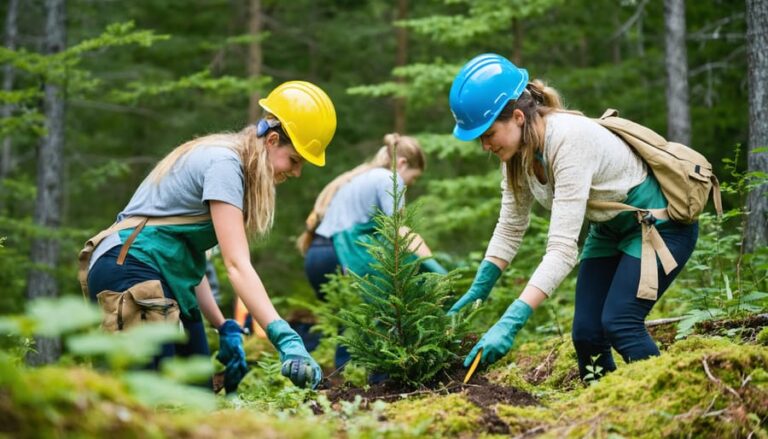

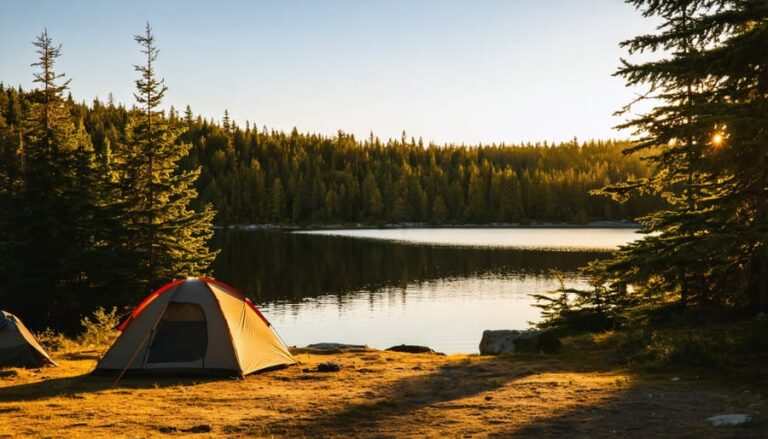
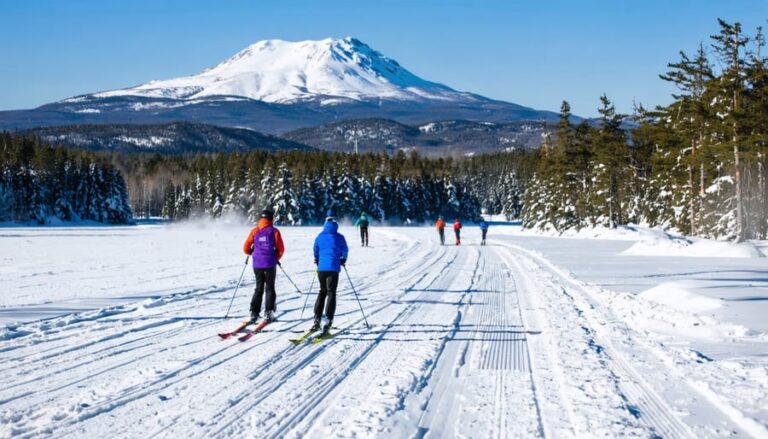


+ There are no comments
Add yours